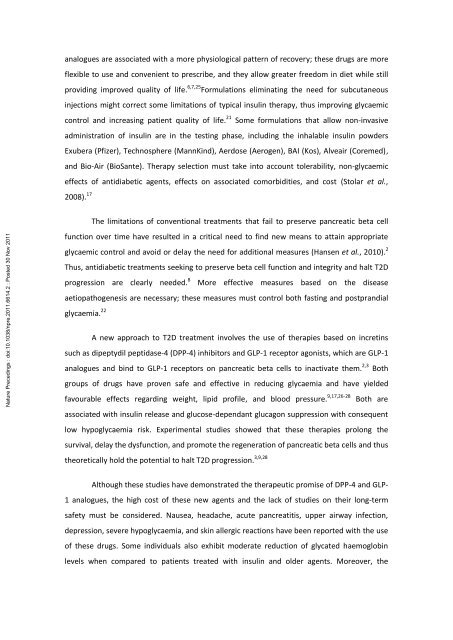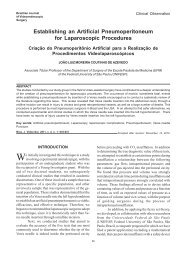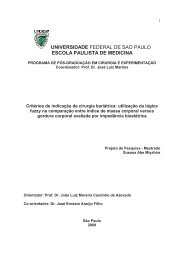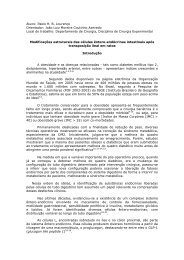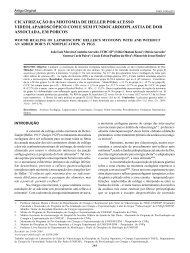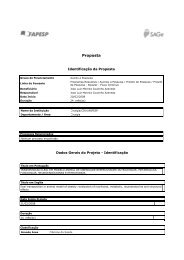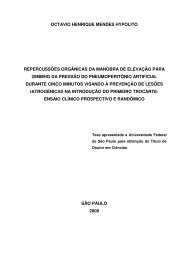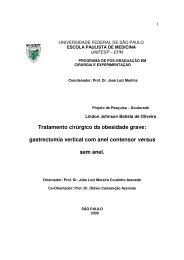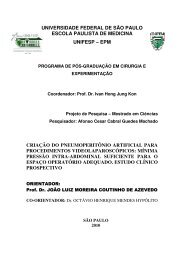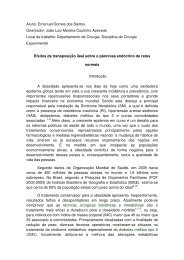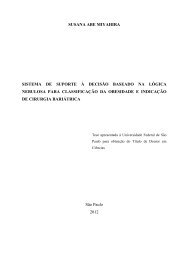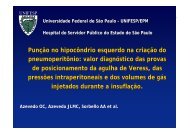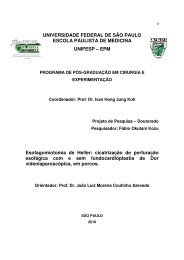Isolated ileal interposition in enteroendocrine L cells differentiation
Isolated ileal interposition in enteroendocrine L cells differentiation
Isolated ileal interposition in enteroendocrine L cells differentiation
You also want an ePaper? Increase the reach of your titles
YUMPU automatically turns print PDFs into web optimized ePapers that Google loves.
analogues are associated with a more physiological pattern of recovery; these drugs are more<br />
flexible to use and convenient to prescribe, and they allow greater freedom <strong>in</strong> diet while still<br />
provid<strong>in</strong>g improved quality of life. 6,7,25 Formulations elim<strong>in</strong>at<strong>in</strong>g the need for subcutaneous<br />
<strong>in</strong>jections might correct some limitations of typical <strong>in</strong>sul<strong>in</strong> therapy, thus improv<strong>in</strong>g glycaemic<br />
control and <strong>in</strong>creas<strong>in</strong>g patient quality of life. 21 Some formulations that allow non-<strong>in</strong>vasive<br />
adm<strong>in</strong>istration of <strong>in</strong>sul<strong>in</strong> are <strong>in</strong> the test<strong>in</strong>g phase, <strong>in</strong>clud<strong>in</strong>g the <strong>in</strong>halable <strong>in</strong>sul<strong>in</strong> powders<br />
Exubera (Pfizer), Technosphere (MannK<strong>in</strong>d), Aerdose (Aerogen), BAI (Kos), Alveair (Coremed),<br />
and Bio-Air (BioSante). Therapy selection must take <strong>in</strong>to account tolerability, non-glycaemic<br />
effects of antidiabetic agents, effects on associated comorbidities, and cost (Stolar et al.,<br />
2008). 17 The limitations of conventional treatments that fail to preserve pancreatic beta cell<br />
Nature Preced<strong>in</strong>gs : doi:10.1038/npre.2011.6614.2 : Posted 30 Nov 2011<br />
function over time have resulted <strong>in</strong> a critical need to f<strong>in</strong>d new means to atta<strong>in</strong> appropriate<br />
glycaemic control and avoid or delay the need for additional measures (Hansen et al., 2010). 2<br />
Thus, antidiabetic treatments seek<strong>in</strong>g to preserve beta cell function and <strong>in</strong>tegrity and halt T2D<br />
progression are clearly needed. 8 More effective measures based on the disease<br />
aetiopathogenesis are necessary; these measures must control both fast<strong>in</strong>g and postprandial<br />
glycaemia. 22<br />
A new approach to T2D treatment <strong>in</strong>volves the use of therapies based on <strong>in</strong>cret<strong>in</strong>s<br />
such as dipeptydil peptidase-4 (DPP-4) <strong>in</strong>hibitors and GLP-1 receptor agonists, which are GLP-1<br />
analogues and b<strong>in</strong>d to GLP-1 receptors on pancreatic beta <strong>cells</strong> to <strong>in</strong>activate them. 2,3 Both<br />
groups of drugs have proven safe and effective <strong>in</strong> reduc<strong>in</strong>g glycaemia and have yielded<br />
favourable effects regard<strong>in</strong>g weight, lipid profile, and blood pressure. 9,17,26-28 Both are<br />
associated with <strong>in</strong>sul<strong>in</strong> release and glucose-dependant glucagon suppression with consequent<br />
low hypoglycaemia risk. Experimental studies showed that these therapies prolong the<br />
survival, delay the dysfunction, and promote the regeneration of pancreatic beta <strong>cells</strong> and thus<br />
theoretically hold the potential to halt T2D progression. 3,9,28<br />
Although these studies have demonstrated the therapeutic promise of DPP-4 and GLP-<br />
1 analogues, the high cost of these new agents and the lack of studies on their long-term<br />
safety must be considered. Nausea, headache, acute pancreatitis, upper airway <strong>in</strong>fection,<br />
depression, severe hypoglycaemia, and sk<strong>in</strong> allergic reactions have been reported with the use<br />
of these drugs. Some <strong>in</strong>dividuals also exhibit moderate reduction of glycated haemoglob<strong>in</strong><br />
levels when compared to patients treated with <strong>in</strong>sul<strong>in</strong> and older agents. Moreover, the


